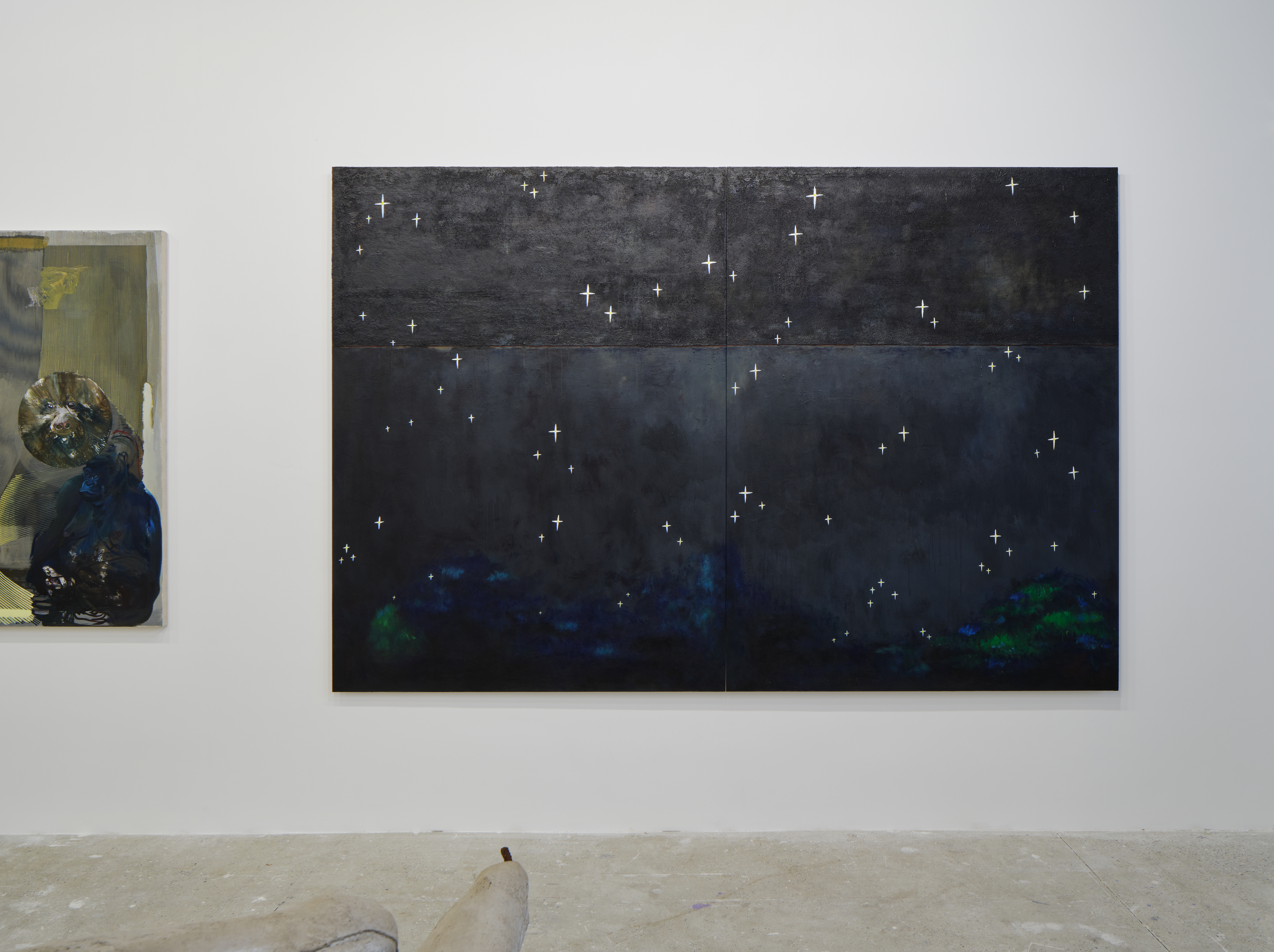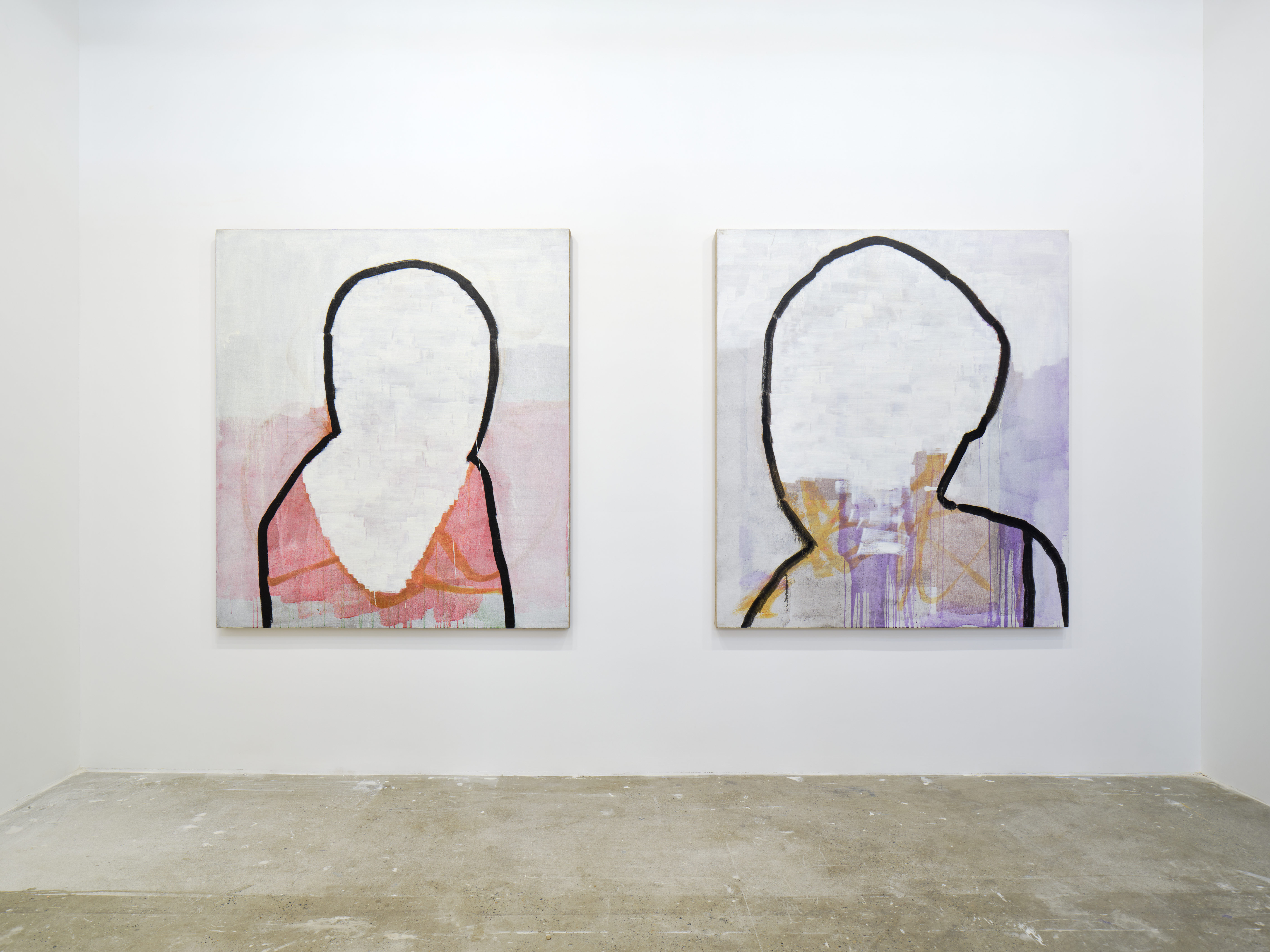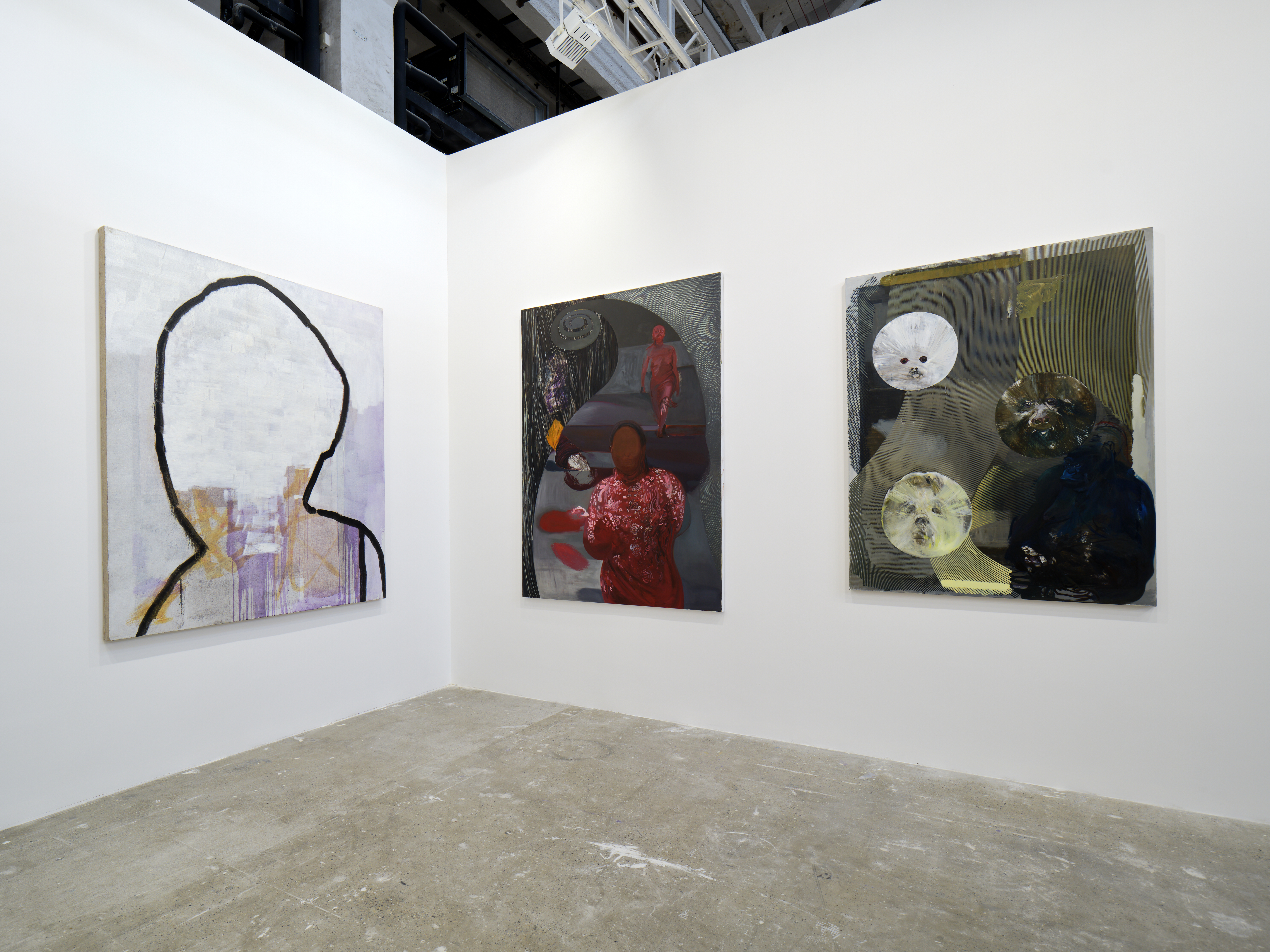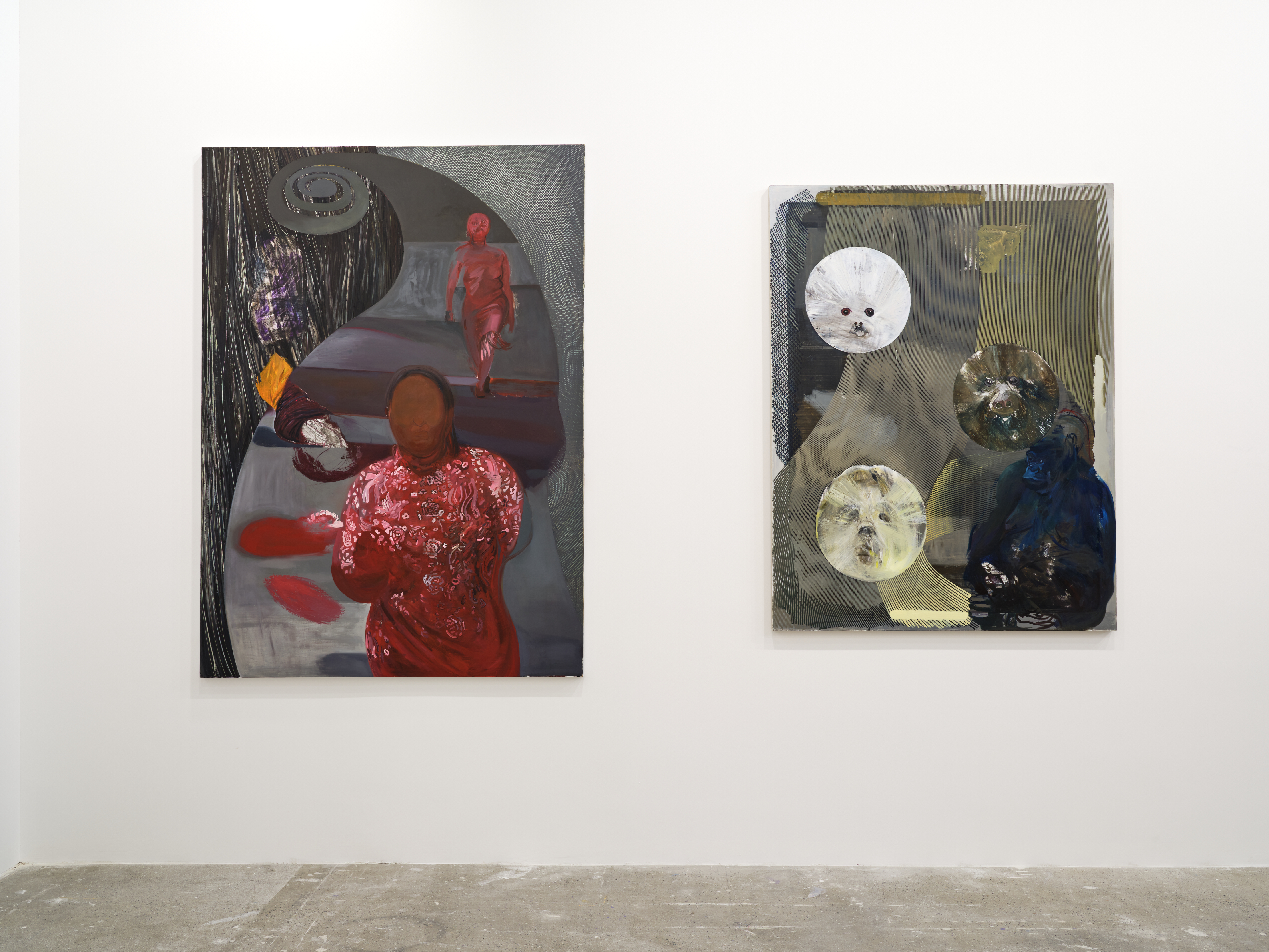Kiang Malingue is pleased to present at West Bund Art & Design recent paintings and sculptures by Chou Yu-Cheng, Homer Shew, Liu Xiaohui, Wang Wei, Wang Zhibo, Yeung Hok Tak, Yu Ji and Zheng Zhou.
Chou Yu-Cheng’s latest paintings demonstrate the manifold ways through which the artist constructs political expressions by combining the geometrical, the atmospheric, the abstract and the handmade. From the Moody #29 that, for Chou, makes a face as it remains concerned with the global pandemic, to works from Water, Color & Paper series that reflect upon the material aspect of abstraction, Chou meticulously layers and choreographs sedimented gradient of colour, making emotionally-charged marks.
Homer Shew’s paintings are inspired by an interest to render Asian people proper portrait sitters — the artist’s father once jokingly claimed that Asians are not suitable subjects — and by a desire to redefine the boundaries of the Asian community. Shew’s portraits are directly named after the sitters, who are his childhood friends, colleagues, fellow artists, and people of Asian descent he meets in the US. The pictures are intimate, candid, and pseudo-photographic in form, presenting individuals and characters that are irreducible to a label or a type.
Liu Xiaohui’s Untitled (Rest by the sea with stone) (2020) depicts an ambiguous female figure against a beautiful cloudscape. Unlike a number of Liu’s other paintings, both the human figure and the background suggest relaxation and stillness, with only the enigmatic black triangular form and the stone in the foreground revealing the multilayered, tense materiality of the scene.
After creating the first Wall on the wall in 2017, Wang Wei revisits the subject of corner painting and creates Wall on the wall 2 in 2020. In the artist’s signature style that emphasises the conceptual aspect of an art object, Wang appropriates murals from the nocturnal animal house at the historical Beijing Zoo. Deadpan and reminiscent of Chinese public art aesthetics from the last quarter of the 20th century, the painted, artificial environments seem alarming yet tranquil.
Wang Zhibo’s two recent paintings speak of the artist’s experience as a sensitive audience. The artist earnestly transforms her visual experience and produces compositions that are humorous, freely exaggerated and distorted, revealing the unique way through which realities are processed in the painter’s mind. Emphasising the anthropomorphic while referring to Robert Smithson, Wang also manages to present in the paintings her exploration of different variations of circular and spiral forms that are at times cute, plump or hypnotic.
Known for telling mesmerising stories through pictures, Yeung Hok Tak presents two paintings that depict explosive and speedy games. A chubby, half-naked young man with a cigarette in his mouth in Cowboy (2020) is seen putting bangers in a pile of shit; in the other corner of the painting, one sees what appears to be the exploded remainder of the mischievous game. In Old Buses Don’t Die (2020), a painting that reiterates Yeung’s long-term interest in visualising speed, one sees once again the artist’s fondness for seriality: just as the young man in Cowboy exploding one pile after another, the buses caught in the dangerous, horizon-tilting chase are positioned in a carefully choreographed sequence.
The latest in Yu Ji’s Flesh in Stone sculpture series is Flesh in Stone – Anthropos II (2021). It is a reconstruction based on both a life casting and the artist’s abstraction of it. “Anthropos” refers to someone capable of thinking critically about what they see. Flesh in Stone – Anthropos II explores the possibility of simultaneously condensing and diluting the human body through sculpture making and replicating.
For his recent Return paintings, Zheng Zhou produces, against typically serene landscapes, unprecedentedly enlarged silhouettes of human figures. Relaxed and pleasing — the easy atmosphere is also hinted by the natural, titled poise of the faceless character — the paintings are constructed upon a balance between the simplicity of the composition, and the difficulty with which the artist achieves the gradated relationship between warm, honeyed colours.
West Bund Art and Design 2022 | Booth A210





